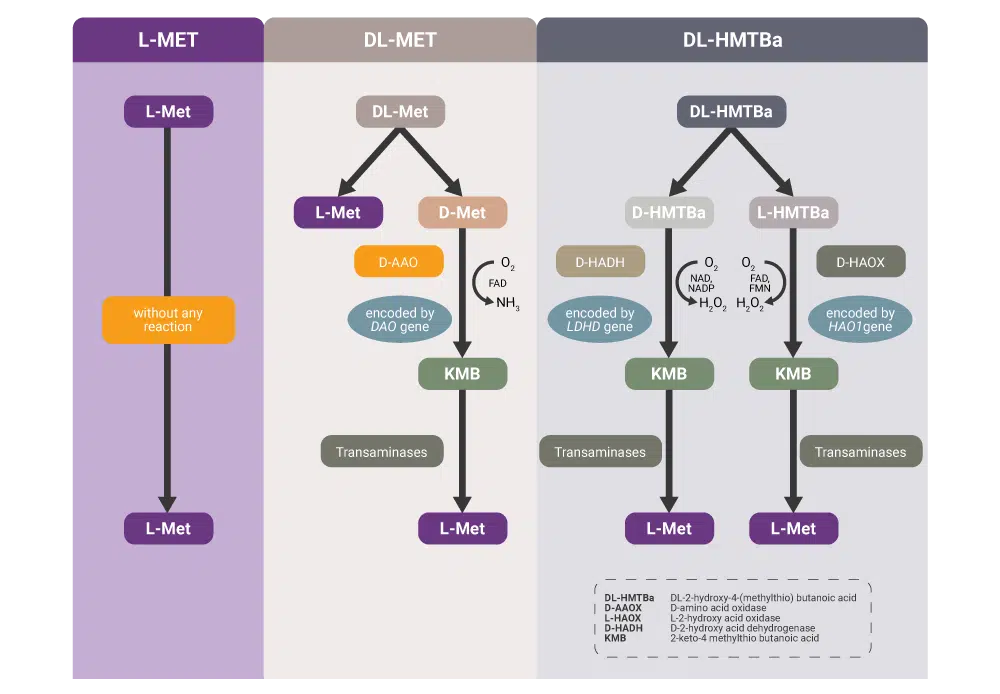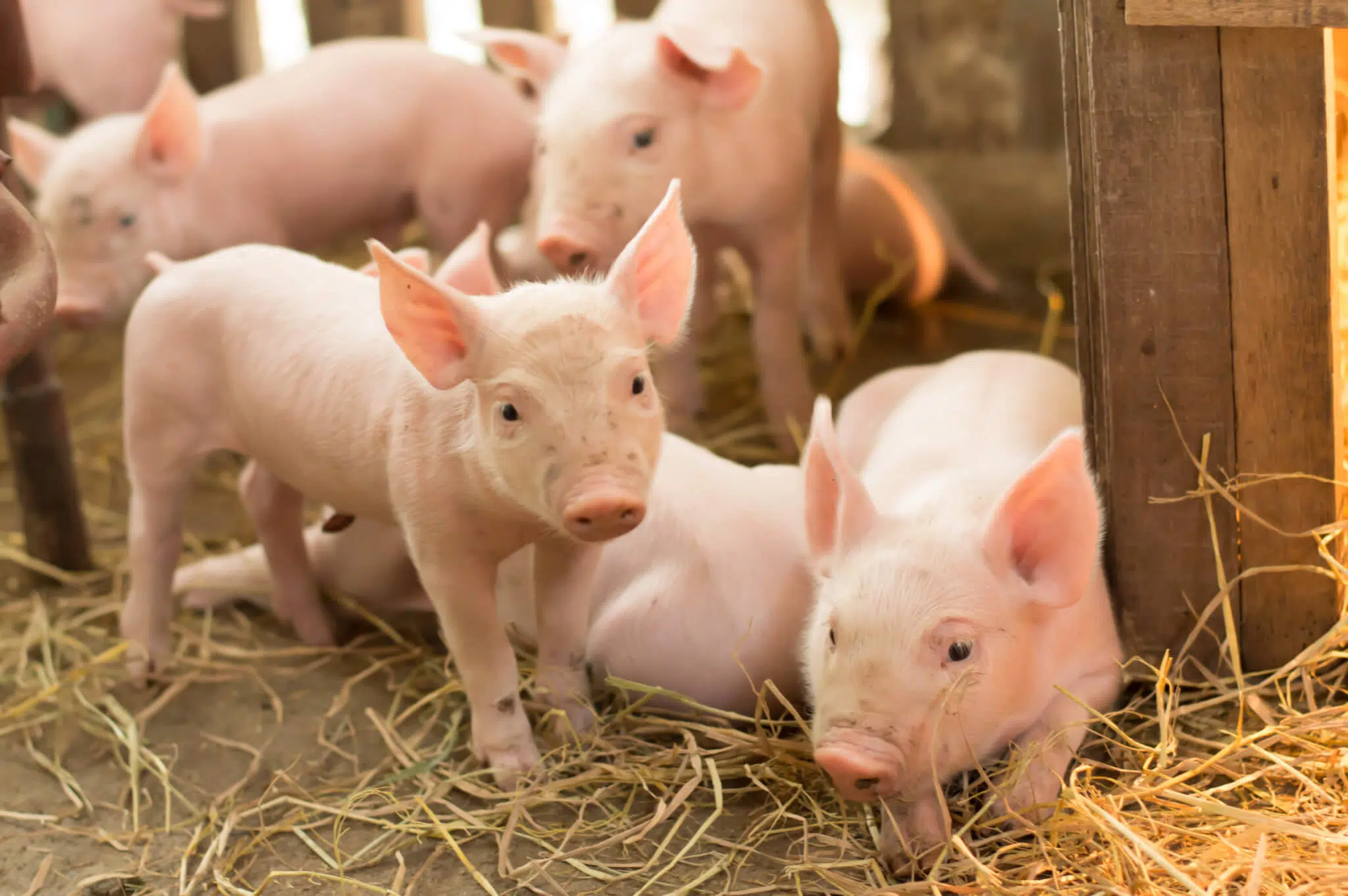Many researchers have investigated the differences between L- and DL-methionine over the past several decades, and yet many nutritionists still have lingering doubts regarding the true value of L-methionine, and the true cost of D-methionine. Today we have a much better understanding of the various factors influencing methionine bioavailability, from ingestion to metabolism and excretion, and the impact of the isomeric forms of methionine on these factors. The conversion of D-methionine to L- methionine requires valuable resources such as energy, enzyme activities, other amino acids, and various cellular capacities.
The journey towards methionine bioavailability
The journey of methionine encompasses crossing various internal frontiers and participating in numerous metabolic processes to ensure delivery of the correct molecule to specific sites where various physiological activities take place, in the most efficient way possible. Any delays or detours will have cost implications in additional energy consumption, enzyme activities, or even the loss of the molecule itself to divergent metabolic pathways, all of which will negatively influence methionine bioavailability. By supplying the correct isomer in the diet, nutritionists can mitigate many of these losses.
The first important frontier to cross is from the intestinal lumen of the small intestine, especially the jejunum and ileum, into the enterocyte, where specific receptors are responsible for ferrying the molecule across the cell membrane. These receptors express an affinity for the L-isomer, increasing maximal absorption of L-methionine, while D-methionine is competing for the same receptors, with a much lower maximal absorption rate.

After absorption, the molecule must traverse the enterocyte lumen, to reach the splanchnic portal system. Up to 20% of dietary methionine is metabolised during this intracellular journey. The intestine possesses the considerable capacity to convert D-methionine to L-methionine, although the liver and kidney are the main sites where this conversion takes place. Valuable resources such as energy, minerals, vitamins and amino acids are needed to synthesise the necessary enzymes, and to catalyze the specific enzymatic actions needed for conversion up to 27% and 23% of whole-body transmethylation and trans-sulfuration, respectively, takes place in the gastrointestinal tract. By supplying L-methionine, unnecessary utilisation of valuable resources can be prevented; resources that can be utilised for other important functions such as intestinal growth and development and improved redox status. As methionine enters the bloodstream and is distributed throughout the various body compartments, L-methionine is utilised wherever it is required. D-methionine, however, first needs to pass through the liver and kidneys for conversion to L-methionine, risking urinary excretion and again consuming valuable resources in the process.
Make an informed decision for methionine bioavailability
For the commercial nutritionist to make an informed decision, the relative bioavailability (RBV) of methionine sources needs to be established. Many researchers have attempted to establish RBV values, and it is clear from these studies that L-methionine is superior to other sources of methionine in terms of methionine availability. Saunderson et al. (1985) measured the excretion rates of 14C-labeled L-methionine, DL-methionine and DL-MHA (methionine hydroxy analogue). The excretion rate (as a percentage of the given dose) for L-methionine was 2%, compared to 10% for DL-methionine and 21% for DL-MHA. This illustrates the fact that conversion of D-methionine to L-methionine is not 100%. Based on their findings, the RBV of DL-methionine and DL-MHA is 90 5% and 67% respectively of L-methionine. More recently, Shen et al. (2014) calculated RBV values in nursery pigs, L:DL, for ADG as 143,8% and for G:F as 122,7%, with significantly improved redox status and gut development.
Conclusion
L-methionine is a superior source of methionine, which can be included at lower levels than conventional supplements while maintaining performance and improving the efficiency of production.
*References for this article are available on request.
Heinrich Jansen van Vuuren holds a BSc in animal science from the University of Pretoria and is the team lead for amino acids, companion animals, and aquaculture at Chemuniqué.










